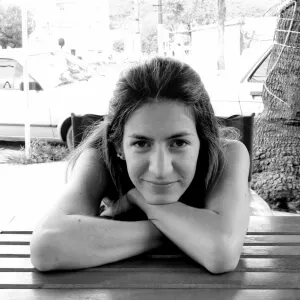3 Tips to Free Yourself from Limiting Beliefs


Written and verified by the psychologist Maria Fatima Seppi Vinuales
“If you believe it, you believe it”. Beyond some nuances that can be made to this statement, the phrase summarizes the power that thoughts have on our actions. And the fact is that many times limiting beliefs and what we ruminate in our minds constantly, end up becoming a self-fulfilling prophecy.
For example, if a person thinks that he is unable to speak in public to explain a project, it gives rise to a vicious circle of thought in which he imagines himself failing, making a mistake, and being the laughingstock of the audience. So if she tries, stress will eventually betray her. And if you don’t try, you will reaffirm your limiting belief that you are incapable.
Limiting beliefs trap and imprison, affecting potential and performance. What can we do to get rid of them? Let’s see.
What are limiting beliefs?
Addressing limiting beliefs is a focus of interest for cognitive psychology. This theoretical approach considers that behavior is directly related to the way in which the world is structured.
One of the main referents of this postulate is Aaron Beck, an expert in depressive disorders. Many of these beliefs or errors in thinking are at the base of different disorders.
Specifying a little more what limiting beliefs are about, we would say that they are those that prevent, hinder, hinder or block a person in his development. They may refer to oneself (in terms of one’s capabilities or possibilities, “I am not capable of doing this”), or to what one deserves (“I do not deserve to be happy”).
Many of these beliefs are based on cognitive biases, that is, on a distortion at the moment of selecting and interpreting information. There are different types of biases and they can replicate and further strengthen limiting beliefs.
The danger is that they become consolidated and reinforced over time.
Several theoretical currents emphasize the importance of early experiences in the formation of limiting beliefs, with respect to a person’s self-concept and self-esteem. Hence, if we have been socialized all our lives to become more and more “small”, this will have undermined our possibilities of perceiving ourselves as capable of facing challenges.
We think you may be interested in reading this, too: 7 Toxic Emotions that are Keeping You from Being Happy
3 tips to get rid of limiting beliefs
Limiting beliefs have the power to point out to us what we are not capable of. That is to say, their greatest evil is that they show us both scenarios: that in which we would like to be and what we would like to do, but simultaneously, that which we are not going to do or achieve.
That is why they provoke discomfort, frustration, and anguish. Next, some advice to challenge and free yourself from limiting beliefs.
1. Identify them and question them
Many of the limiting beliefs are so naturalized that it seems that they have always been there. They are reproduced as in inertia, without even inviting us to think about where they come from or what they are due to. So a first step involves identifying them in order to question them.
We will see that many of them are present and repeated endlessly, in a categorical and taxing manner.
We must go a step further and ask ourselves why we repeat this or that. Sometimes, the answers will have to do with a specific experience that has expanded to other situations; while in other cases, we may find that such an idea comes from something a person once told us. Sometimes, limiting beliefs come from too high expectations when comparing ourselves with others.
When questioning them, it’s also good to put them to the test, to relativize them. For example, is a person really useless because he or she gets nervous when speaking in public? Surely not. That person may have many other strengths.
So some pertinent questions to ask yourself are the following:
- Does it hurt me to think this way?
- How does it benefit me to think this way?
- What things could change by changing the way I think?
- What are the advantages and disadvantages of continuing to hold this belief?
2. Think about alternative proposals for limiting beliefs
Hand in hand with the previous point, as we identify the limiting and dysfunctional belief, we should think about what would be new and better beliefs. Beliefs are not the totality of your person, so do not give them more place than they actually occupy.
Asking yourself questions such as the following is helpful:
- What new belief could I incorporate to stop feeling this way?
- What alternative and different way would it serve me to think differently?
- What would happen if I tried?
3. Accept and speak positively to yourself
There are many limiting beliefs that block us in our purposes. But it’s also true that we must learn to know and respect ourselves as we are.
It’s important that we begin to change the way we speak and address ourselves. If we always say to ourselves “how useless I am, these things happen to you because you are worthless”, we will end up believing it. So we need to exercise kinder, more positive ways.
Finally, it’s worth noting that beyond these practices and questions we can ask ourselves, cognitive therapists work on dysfunctional thought patterns. With professionals, we have a guide to change towards other more functional and adaptive patterns. For this, there are some reprogramming techniques.
Like this article? You may also like to read: 6 Habits to Make You Into a Happy, Successful Woman
Examples of the most common limiting beliefs
Without realizing it, in our day-to-day lives, many of us repeat them as unquestionable truths. Some of the most frequent limiting beliefs are the following.
“If I couldn’t do it before, I won’t be able to do it now”
There are limiting beliefs that originate in a previous experience and have such an impact that they are engraved in fire. A fact appears as determining and conditioning our future.
However, it’s always necessary to think that not only circumstances can change, but also our available resources. So you may not have been able to drive a car without being stopped at every corner at the age of 25, but you might be able to do it at 35.
“It’s not possible for me”
Another limiting belief, similar to the previous one. A goal is postulated as something unrealistic, utopian to achieve. Thus, the attempt to achieve it is immediately frustrated.
“It’s too late”
This belief is based on prejudice due to age or time elapsed. For example, it’s believed that one is too old to change jobs or start a new profession. The question to be asked would be when it’s late or early enough.
“I won’t be able to”
Far from emphasizing those things that can help us in our purpose, we’re only focusing on our limitations. How will we know if we are or not capable without even trying?
The limiting beliefs prevent us from realizing desires
The limiting beliefs are not reduced to the scope of the thought, but they appear conditioning actions and the way in which we feel. One of their biggest obstacles is that they prevent us from connecting with what we want, they leave us in the land of frustration and block us from moving forward.
Working on limiting beliefs does not mean idealizing or ignoring the real limitations or conditioning factors that we encounter. We are not trying to be romantic about existence.
What we should aim to do is to identify resources and strengths, as well as weaknesses and threats. In this way, we can rehearse scenarios and moves that are more realistic and within our reach.
Finally, we need to learn to look at ourselves and stop comparing ourselves to others. If we are always following in the footsteps of others, we will be measuring ourselves with a yardstick that is not appropriate and may be too demanding.
All cited sources were thoroughly reviewed by our team to ensure their quality, reliability, currency, and validity. The bibliography of this article was considered reliable and of academic or scientific accuracy.
- Beck, A. T. (2013). Terapia cognitiva para trastornos de ansiedad. Desclee de brouwer. https://books.google.com/books?hl=es&lr=&id=WZz-DQAAQBAJ&oi=fnd&pg=PT4&dq=Aaron+Beck&ots=VnZcA9i2gw&sig=KlIRFLEI-woLcILXWoI7PKnJ–M
- Concha, D., Bilbao, M., Ángeles, I., Páez, D., Fresno, A. (2016). Sesgos cognitivos y su relación con el bienestar subjetivo. Salud & Sociedad;3(2):115-129. https://doi.org/10.22199/S07187475.2012.0002.00001.
- Díaz, N. C. (2017). Desarrollo del valor de la autoestima, mediante tres técnicas de programación. Revista educación en valores, (27), 47-60. https://dialnet.unirioja.es/servlet/articulo?codigo=7021598
- Rodríguez, J. R., & Escolano, A. F. (2015). La evaluación de creencias y actitudes disfuncionales en los modelos de Ellis y Beck: Similitudes y diferencias. Revista Iberoamericana de Diagnóstico y Evaluación-e Avaliação Psicológica, 2(40), 51-61. https://www.redalyc.org/pdf/4596/459645432006.pdf
- Ruiz, J., Fusté, A. (2015). La Evaluación de Creencias y Actitudes Disfuncionales en los Modelos de Ellis y Beck: Similitudes y Diferencias. Revista Iberoamericana de Diagnóstico y Evaluación;2(40),51-61. https://www.redalyc.org/articulo.oa?id=459645432006.
This text is provided for informational purposes only and does not replace consultation with a professional. If in doubt, consult your specialist.








